- Home
- Lawrence Block
Alive in Shape and Color Page 5
Alive in Shape and Color Read online
Page 5
The first voice, in the darkness, said, “Do you know where you are, Monsieur Ditmar?”
“I am in Arles.”
“Do you know what house this is?”
Hubert shook his head, blinking into the lights.
“You are in the Yellow House.”
Though his face was frozen in pain, Hubert’s expression betrayed his surprise.
“Of course you know what that means. This is where Van Gogh lived. Gauguin visited him for nine weeks in the fall of 1888. They painted upstairs. The house now has the honor of serving as district headquarters for the Gestapo. Think before you speak: the first thing you will tell us is Signor Bartello’s address.” The lamps dimmed, and a short, thin, bespectacled man wearing a black uniform and knee-high boots stepped out of the shadows. “This won’t take long,” he said, lighting a cigarette.
4
On the island of Hiva Oa, at the center of the Marquesas chain, a young woman was walking through a mountain forest on the first of May, 1902. It was close to sunset on a hot afternoon. On either side of the dirt path, emerald ferns fanned out brightly. Clusters of red and orange flowers rose up like flames. Bamboo stalks ticked in the breeze. In the higher mountains a light rain was falling.
The woman’s name was Tohotaua. She had red hair—unusual for a Marquesan—and deep brown eyes. She walked lightly in her bare feet. Her white pareo was tied beneath her bare breasts and broke above her ankles. Eighteen years old, she was the wife of Haapuani, the sorcerer of Hiva Oa. Only twenty-five years old, Haapuani was much feared by the islanders for his magic and his daring feats. It was said he could levitate, turn stones to water, and revive a fallen bird. When there was a new or full moon, he drank a powerful tea brewed from durian seeds and danced all night on the rocky cliffs that rose high above the sea. He wore a scarlet cape with a yellow sash and carried an ironwood scepter on which he had carved animals’ faces. His black hair fell below his shoulders, adorned with a spray of frangipani flowers by his left ear. Tohotaua had married him on her fourteenth birthday. Her father, chieftan of the neighboring island of Motane, conducted the ceremony in the Yellow Forest at the northern tip of Hiva Oa, where all the flowers were yellow and the palm fronds gold.
The path she was on led to a wide valley, beyond which was a smaller clearing with a cluster of teak houses. The largest of these had a kitchen and bedroom on the ground floor and a studio up a dozen outdoor steps. The studio was adorned with greenstone tiki and wooden sculptures. Sketches and paintings in various states of composition were tacked to the walls. There was an easel at the center of the room that faced an ornately carved chair.
Tohotaua climbed the steps, lifting the hem of her skirt, and peered into the studio. She had arrived early, and the painter was not there. She walked around the room, examining the paintings and artifacts and pausing by the chair. The smell of oil paints and incense was strong. She went downstairs and found his cook, Vaeoho, preparing a pungent yam soup. She told Tohotaua that the painter had gone to the stream to bathe.
Tohotaua returned to the front of the house and was startled to find her husband at the foot of the steps. She didn’t know how he could have gotten there so fast without her seeing him.
“Did you follow me?”
“I came from the other direction,” he said, pointing to a steep hill a few hundred yards behind the house. She knew there was no path there and that it was nearly impassable because the ground was so rough and the bamboo and vines so densely packed. But she had learned to expect such things of her husband, and she knew that he never lied.
“I want to watch him paint you.”
“Have you spoken to him?”
“I don’t have to speak to him. You are my wife.” Sometimes, when the light was failing, his eyes seemed to be the same color as his cape. He smiled and his voice softened. “But, yes, I did speak to him this morning.”
There was a stone bench at the other end of the clearing from which the sea was visible, a thick blue line above the treetops. She took his hand and led him to it. “We can wait here,” she said, and they sat side by side as the sun arced down through the mist and set fire to the water.
5
The Widow Venicasse was Van Gogh’s landlady in 1888. She also owned the restaurant in the pink building next door. Van Gogh and Gauguin often ate supper there, sitting silently, their shirts and jackets smeared with paint. They invariably ordered the beef stew or roast chicken and a carafe of cask wine. After living in the Yellow House for several weeks, Gauguin told the widow that having the restaurant next door was a blessing. “Vincent likes to cook soup,” he said, “but he mixes his ingredients according to color, not taste.” She would regale her customers with this anecdote long after the two artists were dead and celebrated.
Marie Venicasse, the daughter of a provincial doctor, married a hotel keeper in Arles. Widowed at forty, she lost their twelve-room hotel near the public gardens to creditors, rented out their former home, the Yellow House, and bought the restaurant, where she lived in a small second-floor apartment. She had one daughter, Vanessa, born in 1877, a pretty girl who resembled her mother when she was young—petite, with brown eyes, delicate features, and flaming red hair. Vanessa married a glazier, Michel Lavoir, and lived happily with him on the other side of the city until he was conscripted and killed at the Battle of Passchendaele in 1917. They had a son who died of cholera a year later. When her mother died in 1919, Vanessa had lost her entire family in just three years. It broke her. She fell ill and nearly died herself. She had inherited the Yellow House and the restaurant, and finding it too painful to remain in the cottage she had shared with her husband and son, she moved to her mother’s old apartment and made her living running the restaurant and renting out rooms in the Yellow House. She had never expected to become the second Widow Venicasse and did not permit anyone to address her as such. Nevertheless, like her mother, she spent her days overseeing a cook, waitress, dishwasher, and handyman. Ten years later, when the country was plunged into depression, and another war was brewing, she considered herself fortunate to have a reliable income. By then she was fifty-three, still spry, but feeling much older inside.
Before all of that, in the fall of 1888, when she was eleven, her mother frequently sent her to the Yellow House with a box lunch for the two painters. It was usually ordered by Gauguin when Van Gogh had the urge to make soup. While Van Gogh often painted in the countryside, and preferred to be alone when he worked in his studio, Gauguin was glad to have Vanessa sit in the corner and chat with him while he painted. He made up fantastical stories that held her rapt. About birds in Martinique that change color according to the season, and a Siamese man who crossed the bottom of the Rhone in stone slippers, breathing air from goatskins. Vanessa in turn told him a story about her father when he was a young sailor on a tropical island.
“He found a magical red conch shell through which he was able to sing to me at night. His voice carried over two oceans. I would lie in bed and listen, and in the background I could hear waves breaking.” She shrugged. “Do you think I really heard him?”
“Of course you did. One day I will live in such a place, and when I do I will look for a red conch shell.”
“And sing?”
“Yes, to you and to my children.”
“Thank you.” She hesitated. “My mother said you don’t see them so much.”
“No, not so much. I need to paint, always in new places.”
“Not at home.”
“My home is where I go with my paints.”
Vanessa thought about this, and felt sorry for his children but happy that he was with her and that, for now, he had made the Yellow House his home.
Six years earlier, he had quit his job as a stockbroker and left his Danish wife and their five children in Copenhagen. He sent money home, but he himself rarely returned. Martinique, Brittany, and Arles were his first stops on the way back to Martinique, and after that Tahiti and the Marquesas.
One col
d afternoon in late December, Vanessa brought Gauguin a pot of tea. He was working on a painting of Van Gogh painting sunflowers. Vanessa told him she was looking forward to Christmas. The previous year her mother had knitted her a bright yellow scarf with orange trim. Gauguin turned around and told her that, as a Christmas present, he would paint her portrait as soon as he completed the sunflower canvas. Excited by his promise, Vanessa rushed home and told her mother.
But Gauguin’s stay in Arles ended abruptly when Van Gogh had an accident and was rushed to the hospital by the police. Vanessa did not learn the circumstances of that accident for some time, but when she next saw Van Gogh, on Christmas Eve, his head was bandaged and he was being tended by his brother, Theo, who had taken the train from Paris. Theo and Gauguin left for Paris together several days later.
Before walking to the train station, Gauguin went by the restaurant for an omelette and coffee. The Widow Venicasse came out to say goodbye, and Vanessa trailed her with a large envelope that she handed to Gauguin.
“I’m sorry you have to leave,” Vanessa said. “This is your Christmas present.”
Inside the envelope was a white feather fan with a red dot above the handle.
Gauguin took the fan from Vanessa and looked up at her mother.
She nodded her assent. “It is hers to give. Her most prized possession.”
“I cannot take it,” he said.
“I want you to have it,” Vanessa said.
“As a young man, my husband was in the navy,” the widow said. “He brought it back from Java.”
“It’s very beautiful,” he said. “You’re sure you want to give it away, Vanessa?”
“I’m sure.”
“Thank you. I will carry it with me for luck. And I will return here one day and paint your portrait.”
6
Hubert Ditmar woke to pealing bells. It was morning. He was no longer in the basement of the Yellow House but in a second-floor room with a single window and blackout drapes. A gap in the drapes revealed steel bars, recently installed. The room was a cell. He was lying on a cot, stripped to his underwear, under a thin blanket. There was a small table and a chair on which his clothes had been piled. Looking around, he realized his field of vision was cut in half because his left eye was swollen shut.
They had beaten him more than they needed to, even after he signed his confession. The short officer struck him so hard that blood shot out of his nose. He hit him again and again. His cheeks were gashed, his lips caked with blood, and he was deaf in his left ear.
Hubert had lied to them about everything, exactly as he was trained to do under such circumstances. He told them the two pages of Catalan were indeed code, and that Bartello kept all the paintings in a vault in Bern. He gave them a list of the forgeries he claimed to have painted, most of which were the originals that he had never laid eyes on. In fact, the paintings stolen back from the Germans had been transported along a tortuous route by a chain of brave men and women in trucks, automobiles, and mule carts, and then on horseback over the Pyrenees and across obscure mountain roads in Spain, to neutral Portugal. The paintings were warehoused in Porto, at the mouth of the Douro River, and guarded by Free French agents from London.
The door to Hubert’s cell was unlocked by a uniformed guard who ushered in a woman with graying red hair who carried a tray. “Give it to him,” the guard said, “and don’t speak.”
She approached Hubert slowly, staring at his face, trying not to betray her horror. He turned his one eye toward her, but his expression remained blank. His was one of the worst beatings she had seen since the Germans commandeered the Yellow House. What could he have done? She knew the Germans allowed her to see their prisoners up close in order to keep her frightened. To make her see what would happen to her if she crossed them.
She had brought Hubert a bowl of soup and a scrap of stale bread. The Germans always watered down the soup and removed the meat. They told her that criminals, enemies of the Reich, were lucky to be getting food at all. Sometimes, if she was sure they weren’t watching, she would add a couple of spoonfuls of real soup to the bowl. Today she hadn’t had the opportunity.
She set the tray down and tried to force a smile for Hubert. But he didn’t notice.
“Get out,” the guard said.
7
On the night of June sixth, word reached Arles that the Allies had landed in Normandy. American paratroopers were dropping from the sky. Warships were bombarding the coastline. The Resistance had waited a long time for this day. In the south, their brigades were mobilizing around the main cities. Forty-nine commandos, led by Captain Alain Deschalles, a pharmacist before the war, entered Arles on the morning of the seventh. Some penetrated deep into the city and took refuge in safe houses. Deschalles’s ferocity in combat and his defiance—wearing a red jacket, making himself a target, to taunt the Germans—had put him at the top of their most-wanted list. They had murdered his wife and son and burned down his pharmacy in Avignon. Some of his men felt he was on a suicide mission. They were amazed that a man who made his living mixing potions and measuring out pills had become so adept with a machine gun and a hunting knife. But however reckless he was with his own life, he tried to minimize the danger to them.
Deschalles’s orders were to execute simultaneous strikes on the German military command center on the Rue Vertier and the Gestapo’s headquarters at 2 Place Lamartine, killing as many Germans as possible and destroying their communications equipment. There was also a high-priority prisoner at Gestapo headquarters who was to be extracted if he was still alive. Deschalles was given the man’s name and description and told that his arrest would have set in motion a long-standing protocol: to provide the Germans with as much disinformation as possible. Deschalles knew that, however carefully crafted, lies offered up during interrogation had a brief shelf life. He had to move swiftly, and he planned to lead the Gestapo raid himself.
Vanessa Venicasse was shredding cabbage in the restaurant kitchen when she learned of the Allied invasion. She couldn’t quite believe it. She had feared that this war would drag on for many years. The capitulation of the Vichy regime had been so rapid, and its collaboration so complete, that she had begun to lose hope for France. Maybe the Allies wouldn’t want to shed blood for a puppet nation.
She knew that the Gestapo’s reaction to this news would be to lash out even more viciously—if that was possible. She advised her staff to keep their heads down and say nothing. When only five Germans from the Yellow House sat down for lunch, she thought it must be that the rest had lost their appetites. Then she learned that there had been a police action to which most of the Gestapo agents were summoned. She wondered if it was an open rebellion inspired by the invasion. In fact, it was an ambush, engineered by Deschalles, in order to draw as many Germans as possible away from their respective headquarters. He had three snipers take positions on rooftops in the city center, and at eleven o’clock sharp, begin shooting every German soldier they spotted on the streets. Between them, the snipers killed nine Germans, setting off an all-out manhunt. One sniper was killed trying to flee, but the other two escaped and at noon joined Deschalles and seventeen of their comrades as they stormed the Yellow House.
The Gestapo agents and SS soldiers were caught off guard. Ten were killed and four soldiers taken prisoner, while Deschalles lost only two men. As soon as the way was clear, he crept up the stairs with one of his lieutenants and rushed the guard outside Hubert’s cell, knocking him to the floor. Deschalles slit his throat and kicked down the door.
Hubert was battered and bloody. He had bruises on his chest and arms. With difficulty, Deschalles and his lieutenant put on Hubert’s clothes, moving him as gently as they could. Deschalles figured he had ten minutes to get his men and Hubert out of the Yellow House. He didn’t know if any of the Germans had managed to call for help before their radio transmitters were smashed, but it seemed likely.
He guided Hubert downstairs. Madame Venicasse was just outside the door
with her staff. Despite the mayhem, she was calm.
“Thank god he’s still alive,” she said.
“I need to get him out of here, madame. He needs a doctor.”
They followed Deschalles into the courtyard between the Yellow House and the restaurant. Two of Deschalles’s men had lined up the four captured soldiers against a wall. Hands on heads, three of the soldiers kept their eyes fixed straight ahead. The fourth, the youngest, had wet his pants and was weeping.
Deschalles turned to Hubert. “Is the pig who beat you here?”
Hubert squinted at the soldiers. It took a few seconds for him to focus. He nodded toward the short captain at the end of the line.
Deschalles approached him. “You beat him, little man?”
The captain glared at him.
Deschalles whipped his revolver up from his hip into the captain’s cheek, crunching the bone, shattering his spectacles. And then across the other cheek. And then his mouth.
The captain doubled over and spat out some teeth, and Deschalles turned to Madame Venicasse. “Please go into the restaurant,” he said. “We’ll join you in a moment.”
Deschalles shoved the captain back against the wall and stuck the gun barrel under his chin.
Inside the restaurant, Madame Venicasse braced herself for the gunshots that reverberated in the courtyard. One shot followed by three others and then four more as Deschalles and his men fired into the soldiers’ chests.
They seated Hubert. A few tables away, the Germans who had come for lunch were sprawled on the floor in their own blood. The food from their upended tables was scattered around them. Hubert sipped water and swallowed a piece of cheese.
Deschalles kneeled beside his chair. “You’re safe now. We’re going to get you out of here. The Allies invaded at Normandy. Everything has changed.”
Hubert stared at him, dazed.
“What were you doing here?” Deschalles said.
“Paintings,” Hubert said haltingly. “Stealing them back from the Germans. Renoir, Monet, Rousseau—our treasures.”

 Tanner on Ice
Tanner on Ice Hit Me
Hit Me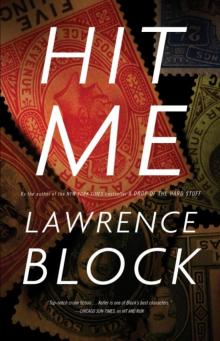 Hit and Run
Hit and Run Hope to Die
Hope to Die Two For Tanner
Two For Tanner Tanners Virgin
Tanners Virgin Dead Girl Blues
Dead Girl Blues One Night Stands and Lost Weekends
One Night Stands and Lost Weekends A Drop of the Hard Stuff
A Drop of the Hard Stuff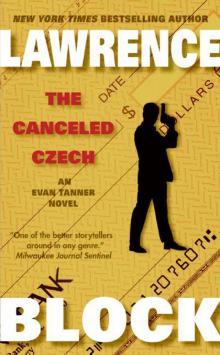 The Canceled Czech
The Canceled Czech Even the Wicked
Even the Wicked Me Tanner, You Jane
Me Tanner, You Jane Quotidian Keller
Quotidian Keller Small Town
Small Town Tanners Tiger
Tanners Tiger A Walk Among the Tombstones
A Walk Among the Tombstones Tanners Twelve Swingers
Tanners Twelve Swingers Gym Rat & the Murder Club
Gym Rat & the Murder Club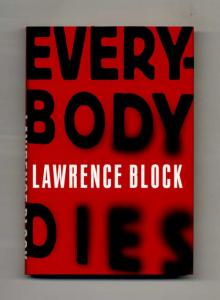 Everybody Dies
Everybody Dies The Thief Who Couldnt Sleep
The Thief Who Couldnt Sleep Hit Parade
Hit Parade The Devil Knows Youre Dead
The Devil Knows Youre Dead The Burglar in Short Order
The Burglar in Short Order A Long Line of Dead Men
A Long Line of Dead Men Keller's Homecoming
Keller's Homecoming Resume Speed
Resume Speed Keller's Adjustment
Keller's Adjustment Eight Million Ways to Die
Eight Million Ways to Die Time to Murder and Create
Time to Murder and Create Out on the Cutting Edge
Out on the Cutting Edge A Dance at the Slaughter House
A Dance at the Slaughter House In the Midst of Death
In the Midst of Death When the Sacred Ginmill Closes
When the Sacred Ginmill Closes You Could Call It Murder
You Could Call It Murder Keller on the Spot
Keller on the Spot A Ticket to the Boneyard
A Ticket to the Boneyard A Time to Scatter Stones
A Time to Scatter Stones Keller's Designated Hitter
Keller's Designated Hitter A Stab in the Dark
A Stab in the Dark Sins of the Fathers
Sins of the Fathers The Burglar in the Closet
The Burglar in the Closet Burglar Who Dropped In On Elvis
Burglar Who Dropped In On Elvis The Burglar Who Painted Like Mondrian
The Burglar Who Painted Like Mondrian The Girl With the Long Green Heart
The Girl With the Long Green Heart The Burglar Who Counted the Spoons (Bernie Rhodenbarr)
The Burglar Who Counted the Spoons (Bernie Rhodenbarr) Burglar Who Smelled Smoke
Burglar Who Smelled Smoke Rude Awakening (Kit Tolliver #2) (The Kit Tolliver Stories)
Rude Awakening (Kit Tolliver #2) (The Kit Tolliver Stories) Don't Get in the Car (Kit Tolliver #9) (The Kit Tolliver Stories)
Don't Get in the Car (Kit Tolliver #9) (The Kit Tolliver Stories) CH04 - The Topless Tulip Caper
CH04 - The Topless Tulip Caper You Can Call Me Lucky (Kit Tolliver #3) (The Kit Tolliver Stories)
You Can Call Me Lucky (Kit Tolliver #3) (The Kit Tolliver Stories) CH02 - Chip Harrison Scores Again
CH02 - Chip Harrison Scores Again Strangers on a Handball Court
Strangers on a Handball Court Cleveland in My Dreams
Cleveland in My Dreams Clean Slate (Kit Tolliver #4) (The Kit Tolliver Stories)
Clean Slate (Kit Tolliver #4) (The Kit Tolliver Stories) The Burglar Who Traded Ted Williams
The Burglar Who Traded Ted Williams Burglar on the Prowl
Burglar on the Prowl In For a Penny (A Story From the Dark Side)
In For a Penny (A Story From the Dark Side) Catch and Release Paperback
Catch and Release Paperback Ride A White Horse
Ride A White Horse No Score
No Score Looking for David (A Matthew Scudder Story Book 7)
Looking for David (A Matthew Scudder Story Book 7)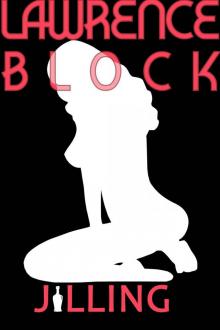 Jilling (Kit Tolliver #6) (The Kit Tolliver Stories)
Jilling (Kit Tolliver #6) (The Kit Tolliver Stories) Ariel
Ariel Enough Rope
Enough Rope Grifter's Game
Grifter's Game Canceled Czech
Canceled Czech Unfinished Business (Kit Tolliver #12) (The Kit Tolliver Stories)
Unfinished Business (Kit Tolliver #12) (The Kit Tolliver Stories) Thirty
Thirty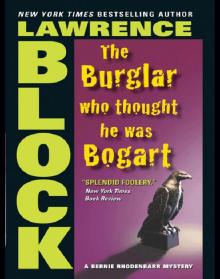 The Burglar Who Thought He Was Bogart
The Burglar Who Thought He Was Bogart Make Out with Murder
Make Out with Murder One Last Night at Grogan's (A Matthew Scudder Story Book 11)
One Last Night at Grogan's (A Matthew Scudder Story Book 11) The Burglar on the Prowl
The Burglar on the Prowl Welcome to the Real World (A Story From the Dark Side)
Welcome to the Real World (A Story From the Dark Side) Keller 05 - Hit Me
Keller 05 - Hit Me Walk Among the Tombstones: A Matthew Scudder Crime Novel
Walk Among the Tombstones: A Matthew Scudder Crime Novel Ronald Rabbit Is a Dirty Old Man
Ronald Rabbit Is a Dirty Old Man The Burglar Who Studied Spinoza
The Burglar Who Studied Spinoza The Burglar Who Liked to Quote Kipling
The Burglar Who Liked to Quote Kipling Keller in Des Moines
Keller in Des Moines Hit List
Hit List The Dettweiler Solution
The Dettweiler Solution HCC 115 - Borderline
HCC 115 - Borderline A Drop of the Hard Stuff: A Matthew Scudder Novel
A Drop of the Hard Stuff: A Matthew Scudder Novel Step by Step
Step by Step The Girl With the Deep Blue Eyes
The Girl With the Deep Blue Eyes If You Can't Stand the Heat (Kit Tolliver #1) (The Kit Tolliver Stories)
If You Can't Stand the Heat (Kit Tolliver #1) (The Kit Tolliver Stories) The Topless Tulip Caper
The Topless Tulip Caper Dolly's Trash & Treasures (A Story From the Dark Side)
Dolly's Trash & Treasures (A Story From the Dark Side) The Triumph of Evil
The Triumph of Evil Fun with Brady and Angelica (Kit Tolliver #10 (The Kit Tolliver Stories)
Fun with Brady and Angelica (Kit Tolliver #10 (The Kit Tolliver Stories) Burglars Can't Be Choosers
Burglars Can't Be Choosers Who Knows Where It Goes (A Story From the Dark Side)
Who Knows Where It Goes (A Story From the Dark Side) Deadly Honeymoon
Deadly Honeymoon Like a Bone in the Throat (A Story From the Dark Side)
Like a Bone in the Throat (A Story From the Dark Side) A Chance to Get Even (A Story From the Dark Side)
A Chance to Get Even (A Story From the Dark Side) The Boy Who Disappeared Clouds
The Boy Who Disappeared Clouds Collecting Ackermans
Collecting Ackermans Waitress Wanted (Kit Tolliver #5) (The Kit Tolliver Stories)
Waitress Wanted (Kit Tolliver #5) (The Kit Tolliver Stories) One Thousand Dollars a Word
One Thousand Dollars a Word Even the Wicked: A Matthew Scudder Novel (Matthew Scudder Mysteries)
Even the Wicked: A Matthew Scudder Novel (Matthew Scudder Mysteries) Hit Man
Hit Man The Night and The Music
The Night and The Music Ehrengraf for the Defense
Ehrengraf for the Defense The Merciful Angel of Death (A Matthew Scudder Story Book 5)
The Merciful Angel of Death (A Matthew Scudder Story Book 5) The Burglar in the Rye
The Burglar in the Rye I Know How to Pick 'Em
I Know How to Pick 'Em Getting Off hcc-69
Getting Off hcc-69 Three in the Side Pocket (A Story From the Dark Side)
Three in the Side Pocket (A Story From the Dark Side)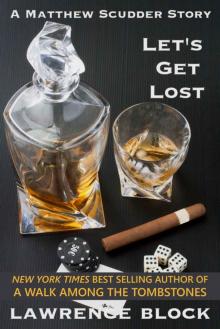 Let's Get Lost (A Matthew Scudder Story Book 8)
Let's Get Lost (A Matthew Scudder Story Book 8) Strange Are the Ways of Love
Strange Are the Ways of Love MOSTLY MURDER: Till Death: a mystery anthology
MOSTLY MURDER: Till Death: a mystery anthology Masters of Noir: Volume Four
Masters of Noir: Volume Four A Week as Andrea Benstock
A Week as Andrea Benstock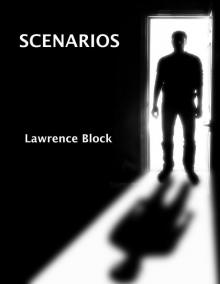 Scenarios (A Stoiry From the Dark Side)
Scenarios (A Stoiry From the Dark Side) The Sex Therapists: What They Can Do and How They Do It (John Warren Wells on Sexual Behavior Book 15)
The Sex Therapists: What They Can Do and How They Do It (John Warren Wells on Sexual Behavior Book 15)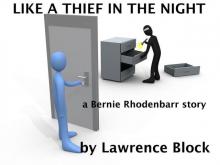 Like a Thief in the Night: a Bernie Rhodenbarr story
Like a Thief in the Night: a Bernie Rhodenbarr story A Diet of Treacle
A Diet of Treacle Community of Women
Community of Women Different Strokes: How I (Gulp!) Wrote, Directed, and Starred in an X-rated Movie (John Warren Wells on Sexual Behavior)
Different Strokes: How I (Gulp!) Wrote, Directed, and Starred in an X-rated Movie (John Warren Wells on Sexual Behavior) You Don't Even Feel It (A Story From the Dark Side)
You Don't Even Feel It (A Story From the Dark Side) Zeroing In (Kit Tolliver #11) (The Kit Tolliver Stories)
Zeroing In (Kit Tolliver #11) (The Kit Tolliver Stories) The Wife-Swap Report (John Warren Wells on Sexual Behavior)
The Wife-Swap Report (John Warren Wells on Sexual Behavior) Keller's Fedora (Kindle Single)
Keller's Fedora (Kindle Single) Speaking of Lust
Speaking of Lust Everybody Dies (Matthew Scudder)
Everybody Dies (Matthew Scudder) Defender of the Innocent: The Casebook of Martin Ehrengraf
Defender of the Innocent: The Casebook of Martin Ehrengraf After the First Death
After the First Death Writing the Novel
Writing the Novel How Far - a one-act stage play
How Far - a one-act stage play Chip Harrison Scores Again
Chip Harrison Scores Again The Topless Tulip Caper ch-4
The Topless Tulip Caper ch-4 The Crime of Our Lives
The Crime of Our Lives Killing Castro
Killing Castro The Trouble with Eden
The Trouble with Eden Nothing Short of Highway Robbery
Nothing Short of Highway Robbery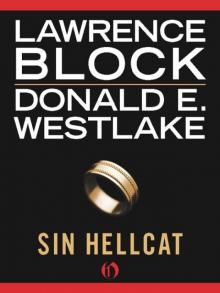 Sin Hellcat
Sin Hellcat Getting Off: A Novel of Sex & Violence (Hard Case Crime)
Getting Off: A Novel of Sex & Violence (Hard Case Crime) Coward's Kiss
Coward's Kiss Alive in Shape and Color
Alive in Shape and Color Blow for Freedom
Blow for Freedom The New Sexual Underground: Crossing the Last Boundaries (John Warren Wells on Sexual Behavior Book 10)
The New Sexual Underground: Crossing the Last Boundaries (John Warren Wells on Sexual Behavior Book 10) April North
April North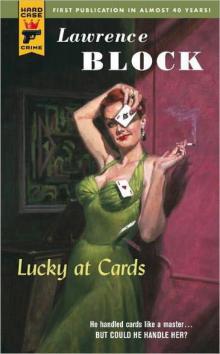 Lucky at Cards
Lucky at Cards One Night Stands; Lost weekends
One Night Stands; Lost weekends Sweet Little Hands (A Story From the Dark Side)
Sweet Little Hands (A Story From the Dark Side) Blood on Their Hands
Blood on Their Hands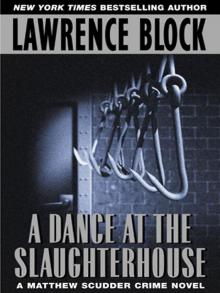 A Dance at the Slaughterhouse
A Dance at the Slaughterhouse Headaches and Bad Dreams (A Story From the Dark Side)
Headaches and Bad Dreams (A Story From the Dark Side) Keller's Therapy
Keller's Therapy The Specialists
The Specialists Hit and Run jk-4
Hit and Run jk-4 Threesome
Threesome Love at a Tender Age (John Warren Wells on Sexual Behavior)
Love at a Tender Age (John Warren Wells on Sexual Behavior) The Devil Knows You're Dead: A MATTHEW SCUDDER CRIME NOVEL
The Devil Knows You're Dead: A MATTHEW SCUDDER CRIME NOVEL Funny You Should Ask
Funny You Should Ask CH01 - No Score
CH01 - No Score Sex and the Stewardess (John Warren Wells on Sexual Behavior)
Sex and the Stewardess (John Warren Wells on Sexual Behavior) A Madwoman's Diary
A Madwoman's Diary When This Man Dies
When This Man Dies Sinner Man
Sinner Man Such Men Are Dangerous
Such Men Are Dangerous A Strange Kind of Love
A Strange Kind of Love Enough of Sorrow
Enough of Sorrow 69 Barrow Street
69 Barrow Street A Moment of Wrong Thinking (Matthew Scudder Mysteries Series Book 9)
A Moment of Wrong Thinking (Matthew Scudder Mysteries Series Book 9) Eight Million Ways to Die ms-5
Eight Million Ways to Die ms-5 Warm and Willing
Warm and Willing Mona
Mona In Sunlight or In Shadow
In Sunlight or In Shadow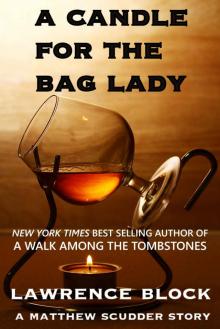 A Candle for the Bag Lady (Matthew Scudder Book 2)
A Candle for the Bag Lady (Matthew Scudder Book 2) Conjugal Rites (Kit Tolliver #7) (The Kit Tolliver Stories)
Conjugal Rites (Kit Tolliver #7) (The Kit Tolliver Stories) Speaking of Lust - the novella
Speaking of Lust - the novella Gigolo Johnny Wells
Gigolo Johnny Wells Dark City Lights
Dark City Lights Versatile Ladies: the bisexual option (John Warren Wells on Sexual Behavior)
Versatile Ladies: the bisexual option (John Warren Wells on Sexual Behavior) Passport to Peril
Passport to Peril The Taboo Breakers: Shock Troops of the Sexual Revolution (John Warren Wells on Sexual Behavior)
The Taboo Breakers: Shock Troops of the Sexual Revolution (John Warren Wells on Sexual Behavior) Lucky at Cards hcc-28
Lucky at Cards hcc-28 Campus Tramp
Campus Tramp 3 is Not a Crowd (John Warren Wells on Sexual Behavior)
3 is Not a Crowd (John Warren Wells on Sexual Behavior)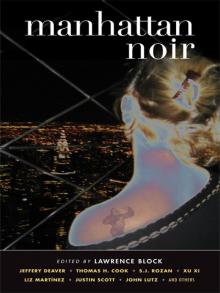 Manhattan Noir
Manhattan Noir The Burglar in the Library
The Burglar in the Library Doing It! - Going Beyond the Sexual Revolution (John Warren Wells on Sexual Behavior Book 13)
Doing It! - Going Beyond the Sexual Revolution (John Warren Wells on Sexual Behavior Book 13) So Willing
So Willing The Burglar Who Traded Ted Williams br-6
The Burglar Who Traded Ted Williams br-6 Candy
Candy Sex Without Strings: A Handbook for Consenting Adults (John Warren Wells on Sexual Behavior)
Sex Without Strings: A Handbook for Consenting Adults (John Warren Wells on Sexual Behavior) The Devil Knows You're Dead: A MATTHEW SCUDDER CRIME NOVEL (Matthew Scudder Mysteries)
The Devil Knows You're Dead: A MATTHEW SCUDDER CRIME NOVEL (Matthew Scudder Mysteries) Manhattan Noir 2
Manhattan Noir 2 The Scoreless Thai (aka Two For Tanner)
The Scoreless Thai (aka Two For Tanner)